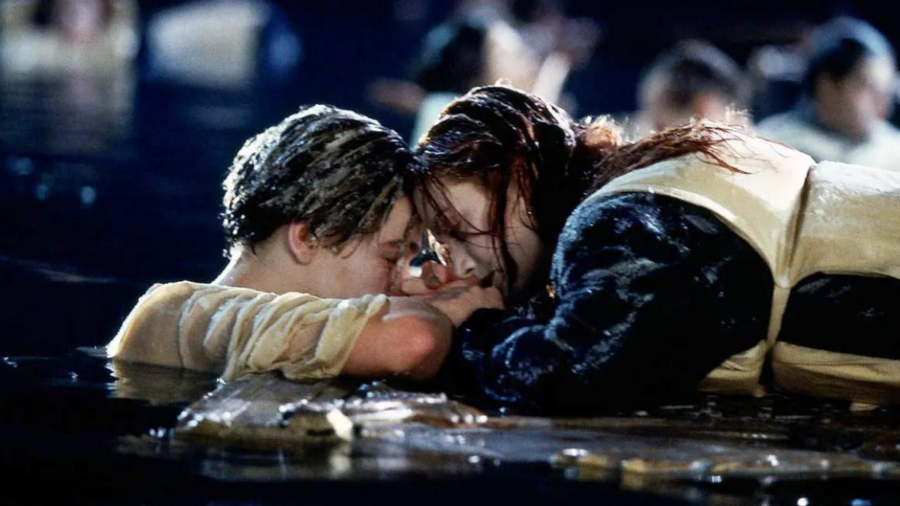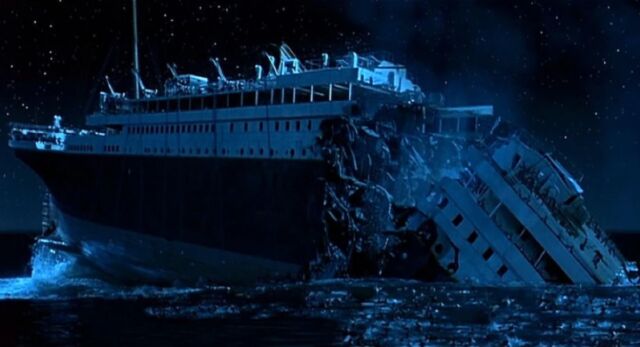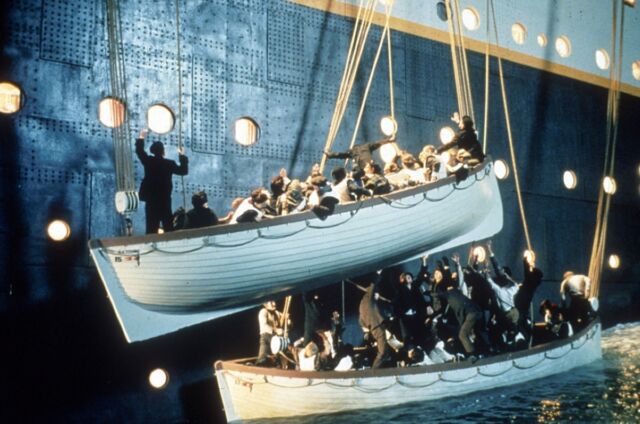Ever since James Cameron’s blockbuster Titanic hit theaters in December 1997, fans have been debating the scene in which Jack (Leonardo DiCaprio) nobly gives up his place on a makeshift raft so Rose (Kate Winslet) can survive.
Tired of constantly defending his artistic choices against claims that the raft could fit both lovers, Cameron decided to recreate the scene in a new documentary for National Geographic: Titanic: 25 Years Later with James Cameron.
Cameron’s attention to detail in Titanic is legendary — so much so that it led astrophysicist Neil deGrasse Tyson to question the astronomical detail depicted in the film as Rose floats in the open ocean, gazing up at the stars. Cameron recalled receiving a rather scathing letter from Tyson, in which he indicated that the exact latitude and longitude for that day and time in 1912 were known. Tyson sent him the correct starfield and Cameron made changes to the 3D re-release of the film.
But the question of whether Jack could have been saved does not have the same unequivocal answer. He even had an episode dedicated to him in Mythbusters in 2012. Hosts Adam Savage and Jamie Hyneman conducted their own experiment and concluded that Jack and Rose could split the raft and survive, provided they kept their upper bodies upright and figured out how to attach Rose’s life jacket under the raft to increase buoyancy. Cameron also appeared in the episode, telling the duo that they had “missed the point” and hadn’t considered how difficult it was to tie a life jacket to a wreck in cold water.
“Had he lived, the ending of the film would have been meaningless,” Cameron said in Vanity Fair interview in 2017, on the film’s 20th anniversary. “The film is about death and separation; he had to die. So whether it was that, or whether a smoke stack fell on him, he was going down. It’s called art, things happen for artistic reasons, not for physics reasons.”
Cameron said he spent two days on set testing the wood in water to get the right buoyancy. He decided that Rose could not be submerged in -2 degree water if she was going to live one to three hours before being rescued.
It’s been 25 years since the premiere, and Cameron has conducted a scientific study to put an end to fan claims.
Two stuntmen of the same age, height and weight were chosen for the role of Jack and Rose. They were equipped with three internal thermometers to monitor their body temperature (if their temperature dropped below 35 degrees, they were hypothetically considered dead) and tested several different scenarios with the raft floating in a tank of cold water. Cameron also recreated the script suggested by Mythbusters.
The answer was always the same: either Jack or Rose could be on the raft and survive, but not both.
But Cameron admits that there is at least one scenario in which Jack could have survived, he just doesn’t think it’s likely: if both Jack and Rose on the raft had kept their upper bodies as far away from the water as possible: “I think [Jack’s] thought process was, ‘I’m not going to do one thing that jeopardizes [Rose’s survival].'” As Cameron points out, it’s completely in his character.
Cameron also reviewed the accuracy of the re-enactment of the sinking of the ship: namely, whether the Titanic split in half or not. In the film, the bow of the ship sinks to the bottom first and the stern splashes onto the water before rising again to a vertical position and plunging into the icy depths. He was guided by the best information available at the time, but always questioned whether he understood everything correctly.
To learn more, Cameron consulted the US Navy and turned to computer simulations, which showed that the ship’s stern would have broken when it stuck out of the water only 23 degrees, rather than the full 90 degrees. Then he and his the team built a model of the Titanic and practiced sinking it in a tank of water under controlled conditions, relying on practical rigging and some pyrotechnics to simulate the event. The result: Cameron was half right.
“We found out you can have the stern sink vertically, and you can have the stern fall back with a big splash, but you can’t have both,” he says in the documentary.
What about the lack of lifeboats? It was always believed to be part of the fatal chain of events that led to the massive loss of life in the sinking of the Titanic. In the film, Rose directly questions Thomas Andrews (Victor Garber), the ship’s builder, about the lack of lifeboats. Cameron decided to test this theory as well.
He recreated the lifeboat lowering scene to determine how long it would take to lower one boat. His team managed to do it in 8.5 minutes, which Cameron rounded up to 10 minutes, taking into account all the unpredictable variables (including panic). This means that it would have taken at least 2 hours to launch all the available lifeboats, not to mention the additional ones that could have saved more lives as you can imagine. “Titanic” sank in just an hour and a half.
The film also shows some of the lifeboats falling on top of each other as the Titanic sinks deeper and deeper into the ocean, with the men in the lifeboats desperately cutting the davit ropes with pocket knives to avoid a collision. Cameron boldly volunteered to do the same, concluding, “Cutting davits with pocket knives is hard.” So it’s likely that even if there were enough lifeboats, they would just get in the way.
The film Titanic: 25 Years Later by James Cameron will come to Ukrainian cinemas on February 9.








Loading comments …